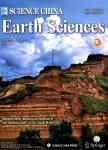Pollen dispersal in traditional processing of buckwheat and its application in agricultural archaeology
Pollen dispersal in traditional processing of buckwheat and its application in agricultural archaeology作者机构:Key Laboratory of Vertebrate Evolution and Human Origins of Chinese Academy of SciencesInstitute of Vertebrate Paleontology and PaleoanthropologyChinese Academy of SciencesBeijing 100044China Department of Archaeology and AnthropologyUniversity of Chinese Academy of SciencesBeijing 100049China
出 版 物:《Science China Earth Sciences》 (中国科学(地球科学英文版))
年 卷 期:2018年第61卷第12期
页 面:1792-1803页
核心收录:
学科分类:07[理学] 0708[理学-地球物理学] 0704[理学-天文学]
基 金:supported by the National Natural Science Foundation of China (Grant Nos. 41471167 & 41730319) the National Basic Research Program of China (Grant No. 2015CB953803)
主 题:Buckwheat Crop processing Pollen dispersal Agricultural activities Agricultural archaeology
摘 要:Pollen, as an important index of the paleoenvironment and ancient human agricultural activities, is also one of the significant indicators for research on buckwheat agriculture. In order to test buckwheat pollen dispersal during each crop processing stage, we applied traditional processing simulation experiments of buckwheat crops in a modern village, to collect aerial pollen and perform statistical analysis. The result has shown that the distribution of buckwheat pollen in residential areas is closely related to human processing behaviour. Among all the processing procedures, pollen release rate is highest in the threshing and the sieving stages. The redistribution and burial of pollen during crop processing is an important reason for the prominent increase of crop pollen concentration in the cultural layer. Not only can it indicate the cultivation and processing behaviour of humans but also provide a basis for identifying the crop processing remains in archaeological sites and assessing the intensity of agricultural activities.



